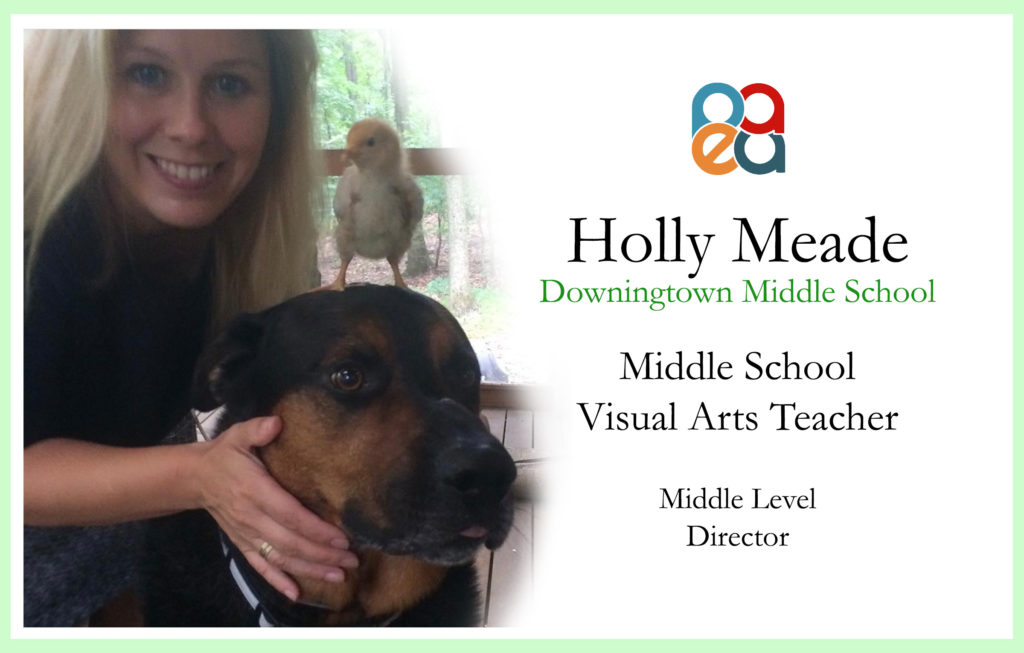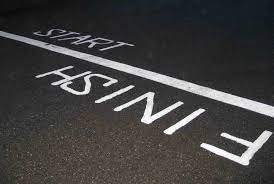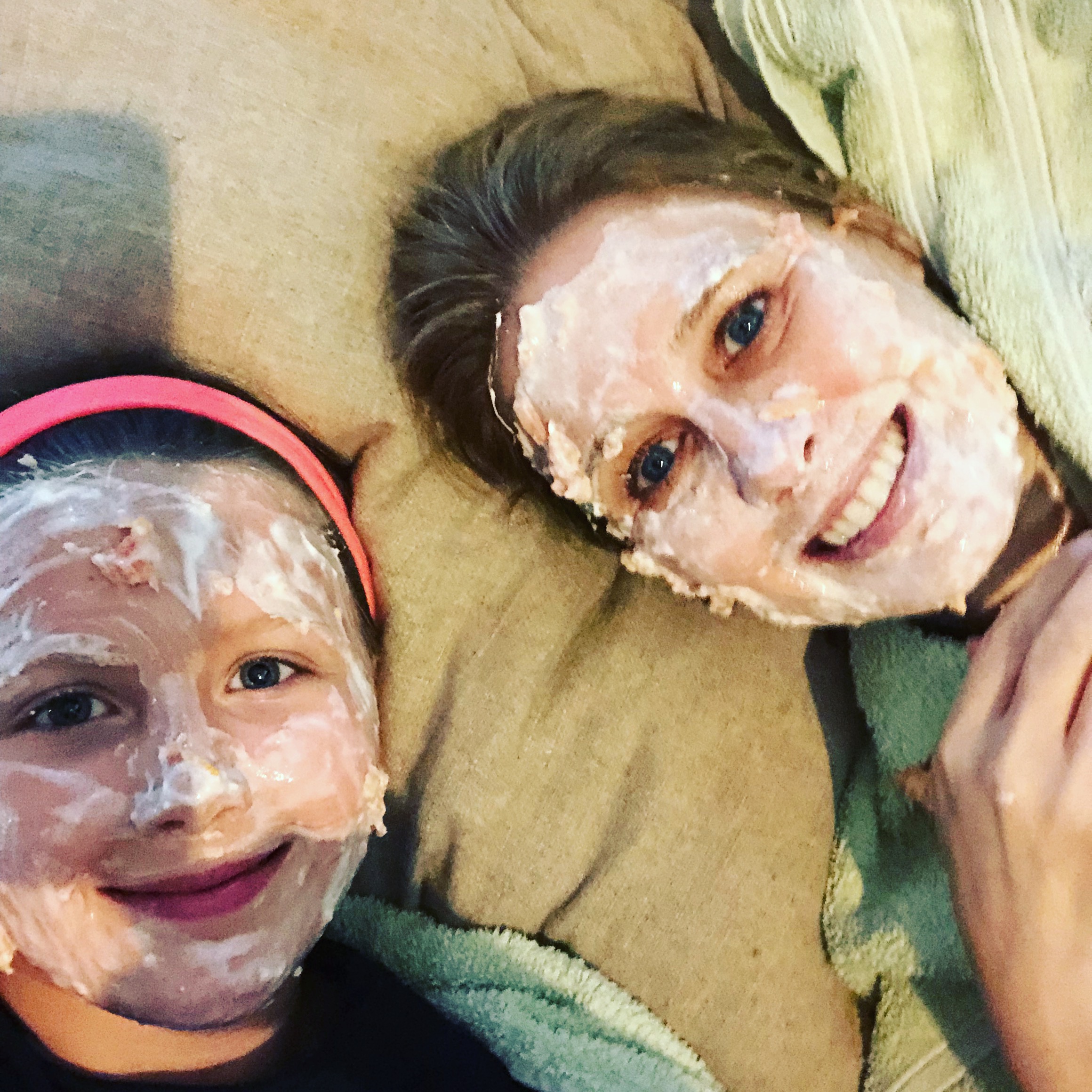Meeting Student Where They Are; The Center of Lesson Design and Assessment for Learning
Holly Meade is a Middle School Visual Arts Teacher at Downingtown Middle School. Degrees include BFA, M.Ed. ( certifications in Art, Elementary Ed, Social-Emotional Learning, and Behavioral Wellness (Drexel University), and has completed the PA ELL program at Cabrini University. She is the PAEA Middle-Level Director. Holly has 2 children of her own, is a gentlewoman farmer, avid gardener, and an artist at the core of it all.
Meeting Student Where They Are; The Center of Lesson Design and Assessment for Learning
We are off to another strange start to the school year, but hopefully, we have all spent some time this summer shedding a little of the skin from the last year and a half. I know I spent some time trying to give my curriculum a bit of a glow-up (I tried several times on myself but it was not as successful as I had hoped); re-creating some lessons, updating some slides, and adding some new units. But it sort of seems like we’ve been at school for the last 18 months. As I sat down to write my new lesson plans-I pulled out my UbD plan templates, that I have not used since 2019, and I really sat with the weight of the last 18 months. Although I know where I want them to be at the end of the unit, where are they? Do they feel as if it has been a perpetual school year since March 2020?
Yes, while analyzing my Back-to-School activities this year, most students felt as if they had not been creative and a large majority had not had art since 5th grade, and now they are in Middle School.
Back to the drawing board, literally and figuratively. How do I design lessons that are engaging, have rigor and engagement, and are equitable? It’s time for not only reformulating my lessons but also my assessment. Time to re-examine assessment as an assessment for learning so I can meet the students where they are at and build upon it.
What is assessment for learning? Assessment for learning is a process that includes data collection, planning, gathering information for a specific purpose, and using the evidence to improve learning. Pre-assessment at its finest. Assessment for learning is teacher-driven and the way to develop a starting point for our students when planning curriculum, instruction, and whatever assessment of learning we create.
I know this is not easy, for example, it stopped me from going as far as I wanted in designing new units because I didn’t know what knowledge and skills the students had, due to the last 18 months and therefore, I realized I must pre-assess the students in order to meet them where they are. There are 2 forms of assessment for learning, informal and formal.
Informal pre-assessments are completed during instruction and are pretty quick to do. You can give immediate feedback. This process lets you get to know your students’ level of content knowledge and can occur in such an organic manner that it may also help you get to know your students’ interests.
Formal pre-assessments have standardized administration in the classroom and have mainly correct or incorrect answers. The results can be used to develop norm-referenced results. This should only ever be used to guide instruction or mark growth, not to use the scores in any other manner.
I always use informal pre-assessment, just because this works best for my classroom environment. I like a more relaxed structure. For instance, when updating a Graffiti unit, I used a Graffiti Wall for my preassessment. I had my whiteboard set up with an array of colored expo markers and asked them to show me what they know by graffitiing my whiteboard.
Some other strategies are:
Four Corners: Great for developing essential questions. Assign the 4 corners of the room as strongly agree, agree, disagree, and strongly disagree. Make a statement such as, “Artists have a responsibility to their audience.” And let them move all around the room! Make sure they understand that there is no right or wrong answer. This really helps guide the Essential Questions’s for the unit!
Matching Games: Have cards that have a corresponding vocab or picture and have them find students that have the match. Great for color theory! You can use a deconstructed color wheel and use it in many different ways. Find the compliment, find your analogous friend, etc. Just be sure to float around to guide anyone who is struggling, remember it’s not a competition, it’s a way to gauge previous knowledge.
Super Sleuth: Give students paper or a google doc (or whatever platform you use) that describes questions related to a unit, or more than one unit, a great way to save yourself time, and have them interview students around the room to get the answers. Example: The heist-A Basquiat and a Warhol have been stolen, devise questions to see if students have seen the works while asking things like; What did the images look like? Have you ever seen a Warhol? Have the students put initials in the question areas so that you know each student had a chance to play.
See-Run-Do: Great for teaching observational drawing and critical response. Do by tables or groups of 3. Hang an image away (I use the hallway) from the classroom. Have a paper and pencil at the table. Divide the group into a See-er, a runner, and a doer. The see-er goes to the hall and has a set amount of time to observe the picture, they ten meet the runner at the door (out of sight of the picture) and have to describe the image to them. The runner then must go to the table and describe to the do-er what the image is and they must draw it. All players stay silent except for one interaction. After, hang the pictures and the images drawn by the students and compare. Discuss and create a list, Venn diagram, anything you choose, and discuss why observation is important, how it ties in with art analysis, etc. It’s very fun!
Warm-Ups: A great low-stakes form of preassessment that you can tailor to any topic and keep to 10 minutes or less. Example: draw an object from nature that displays radial symmetry.
Stick it to me: Give the students a prompt and have them draw the concept or write about it on a sticky note and slap it on the wall or door as they leave class. I have a giant easel set up with an old whiteboard on it that I’ll draw a funny picture on or put up a meme and they love slapping that post-it on there as they leave.
Of course, I’m sure you all have your own form of fun activities you can tailor to use as an informal assessment for learning, but these are just a few that I have done and know kids really enjoy.
Keep in mind that assessment for learning is the foundation for Understanding by Design The framework begins with outcomes and posed essential questions, but teacher preparation for student learning is the key and the core of the learning cycle.
Have a GREAT year! Happy Planning!





 D5 Creation
D5 Creation